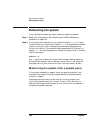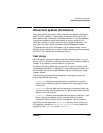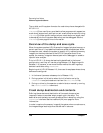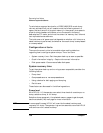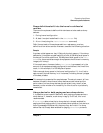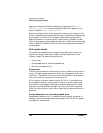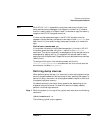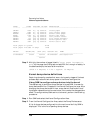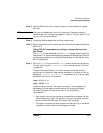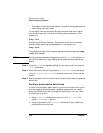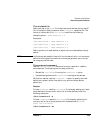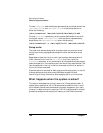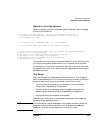
154 Chapter 7
Recovering from failures
Abnormal system shutdowns
paging from being enabled to the device by creating the file /etc/
savecore.LCK. swapon does not enable the device for paging if the
device is locked in /etc/savecore.LCK.
Systems configured with small amounts of memory and using only the
primary swap device as a dump device might not be able to preserve the
dump (copy it to the HP-UX file system area) before paging activity
destroys the data in the dump area. Larger memory systems are less
likely to need paging (swap) space during start-up and are therefore less
likely to destroy a memory dump on the primary paging device before it
can be copied.
Disk space needs
This section discusses how to manage limited disk resources on the
system for the post-crash dump and/or the post-reboot save of the
memory image. The factors to consider are:
•Dump level
• Compressed save vs. noncompressed save
• Partial save (savecrash -p)
Dump level
There are three levels of core dumps: full dump. selective dump, and no
dump. The fewer pages required to dump, the less space is required to
hold them. Therefore, a full dump is not recommended. If disk space is
really at a premium, one option is no dump at all.
A third option is called a selective dump. HP-UX 11.0 can determine
which pages of memory are the most critical for a given type of crash,
and save only those pages. Choosing this option can save a lot of disk
space on the dump devices and again later on the HP-UX file system
area. For instructions on how to do this see “Defining dump devices” on
page 155.
Compressed save vs. noncompressed save
Regardless of whether a full or selective dump is chosen, whatever is
saved on the dump devices needs to be copied to the HP-UX file system
area before it can be used.



